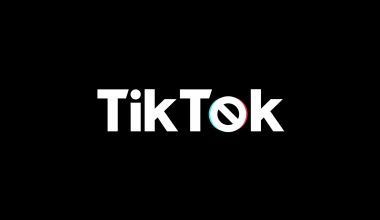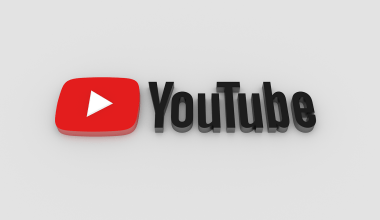In today’s digital era, the way we share content has evolved tremendously. Videos have become one of the most effective tools for communication, entertainment, and marketing. But creating a video is just the first step. To make an impact, you need to distribute it widely. That’s why knowing how to upload your video on all digital stores and multiple platforms is crucial.
When your video is available on different platforms, you expand its reach significantly. Whether you’re an independent filmmaker, a small business owner, or just someone sharing a passion project, getting your video in front of the right audience can make a world of difference.
Why Should You Upload Videos on Multiple Platforms?
Reaching diverse audiences is easier when your video is available on multiple digital stores and platforms. Different platforms cater to different user groups. For instance, YouTube is a go-to for tutorials and entertainment, while Vimeo is popular among professionals for its high-quality content. Similarly, platforms like Instagram and TikTok cater to younger audiences.
By uploading your video on all digital stores, you’re not putting all your eggs in one basket. If one platform doesn’t perform well, others can compensate. Additionally, having your video on various platforms increases your chances of being discovered by new viewers.
Let’s dive into how you can do it step by step.
Step 1: Prepare Your Video for Upload
Before you start uploading your video on all digital stores, ensure that it’s ready for distribution. A well-prepared video will save you time and effort down the road. Here’s what you need to check:
- File Format: Most platforms accept MP4, but check each platform’s requirements to avoid issues.
- Resolution: Aim for at least 1080p for better quality. Some platforms support 4K, which is ideal for high-definition content.
- File Size: Compress your video without losing quality to ensure quick uploads and compatibility.
- Metadata: Add a compelling title, description, and relevant tags. These help improve your video’s visibility.
Step 2: Choose the Right Platforms
Uploading your video on all digital stores means selecting the platforms that align with your goals. While some platforms are free, others require a subscription or payment. Here are some popular options:
- YouTube: The largest video-sharing platform, ideal for reaching a global audience.
- Vimeo: Perfect for professionals and creators who want to showcase high-quality content.
- Instagram: Great for short and visually appealing videos.
- Facebook: Offers a wide reach with diverse user demographics.
- TikTok: Popular among younger audiences for engaging, short-form videos.
- Digital Stores: Platforms like iTunes, Google Play, and Amazon allow you to sell or rent your videos.
Step 3: Use a Distribution Service
Manually uploading your video on all digital stores can be time-consuming. A distribution service simplifies the process by allowing you to upload once and distribute across multiple platforms. Here are some popular distribution services:
- Delivermytune: Ideal for selling music and videos on platforms like iTunes and Amazon.
- CD Baby: A great choice for independent artists looking to distribute their content widely.
- DistroKid: Known for its fast distribution and affordable pricing.
- Vydia: Offers tools to manage and distribute videos across platforms.
Using a distribution service ensures your video maintains consistent quality and metadata across all platforms.
Step 4: Optimize Your Video for Each Platform
Every platform has unique requirements and user preferences. To maximize the impact of your video, tailor it for each platform:
- YouTube: Create a custom thumbnail and add subtitles to improve accessibility.
- Instagram and TikTok: Edit your video to fit vertical formats and add trending music or hashtags.
- Facebook: Use captions since many users watch videos on mute.
- Digital Stores: Add high-quality artwork and detailed descriptions to attract buyers.
Step 5: Promote Your Video
Uploading your video on all digital stores and multiple platforms is just the beginning. To ensure your content gets noticed, invest time in promotion:
- Social Media: Share your video on your social media accounts with engaging captions and hashtags.
- Email Marketing: Send your video to your email subscribers with a call-to-action.
- Collaborations: Partner with influencers or other creators to increase visibility.
- Advertising: Use paid ads to target specific audiences on platforms like Facebook and YouTube.
Step 6: Monitor and Adjust
Once your video is live, track its performance across platforms. Use analytics tools to understand which platforms perform best and why. This data will help you optimize future uploads and focus on platforms that bring the most value.
Keep an eye on:
- Views: Indicates the reach of your video.
- Engagement: Includes likes, comments, and shares.
- Revenue: Tracks earnings from digital stores.
By monitoring these metrics, you can refine your strategy and ensure long-term success.
Conclusion
Uploading your video on all digital stores and multiple platforms is a powerful way to reach a broader audience and maximize your impact. By following the steps outlined above, you can make the process simple and efficient. Remember, the key is preparation, optimization, and consistent promotion. With the right approach, your video will find its way to the screens of viewers around the world.
Related Articles:
For further reading, explore these related articles:
- How to Release Your Album on YouTube Music Easily
- How to Release Your Album on YouTube Music for Free
For additional resources on music marketing and distribution, visit DMT RECORDS PRIVATE LIMITED.






